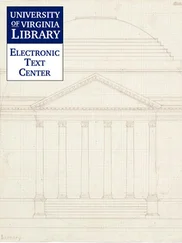Unless, of course, you consider a tsunami a “direct result” of an earthquake.
What quickly turned the triumph of decades of earthquake planning into a tragedy of historic proportions were the tsunami waves that began to arrive on the Japanese coast about an hour after the earthquake. Residents of the coastal cities had also been warned via text message of a tsunami risk, but a Japanese study later showed that many people underestimated the potential danger. Most of them had experienced tsunamis before and survived, so why would this be any different?
Hundred-foot waves. That’s the reason.
The tsunami waves reached as high as one hundred feet, and in some areas traveled as far as six miles inland. More than one million buildings were partially or completely destroyed. Twenty-eight thousand people died or went missing, and almost half a million people were displaced. In Onagawa, Japan, a four-story reinforced-concrete, supposedly tsunami-resistant building was toppled like a toy.
When it all was over, and a full accounting of the damage was made (which included the meltdown of the Fukushima Daiichi Nuclear Power Plant), the Tohoku earthquake and tsunami would cost the Japanese $360 billion in economic damage, making it the costliest natural disaster in human history (for comparison, Hurricane Katrina cost the United States $250 billion).
But it could have been way, way, way worse. As bad as it was, Japan’s infrastructure was quite prepared for a tsunami of this magnitude—or at least as prepared as it could be. Without this high level of preparation, Japan in 2011 could have easily been a repeat of the Indian Ocean tsunami of 2004, which killed 230,000 people, most of them in countries that had infrastructure far inferior to Japan’s.
One can only imagine what this tsunami would have done to Japan if it had hit the islands several decades earlier, at a time when the country was predominantly made up of wooden buildings and houses, and when technology hadn’t advanced far enough to provide citizens adequate advanced warning. Hundreds of thousands, or even millions, could have been killed. The Japanese economy could have been damaged beyond repair.
Today, this scenario sounds like a humanitarian tragedy of epic proportions.
In January 1944, it sounded like an opportunity to end a war.
• • •
They called itProject Seal.
The concept came from U.S. Navy wing commander E. A. Gibson, who had been part of engineering surveys in the Pacific during the period from 1936 to 1942. While there, he noticed that blasting operations on submerged coral formations sometimes caused unusually large waves. This gave him an idea.
What if we could use explosives to create an artificial tsunami? We could harness the forces of nature. We could use the power of the sea to crush the Japanese. We could win the war.
(Little did Gibson know that slightly different forces of nature were being harnessed at that same time in laboratories in New Mexico. But I digress.)
In January 1944, Wing Commander Gibson had the chance to pitch his plan to Lieutenant General Sir Edward Puttick, chief of New Zealand’s General Staff. Puttick thought the idea was just crazy enough to work, and so he instructed Gibson to put together a team to start preliminary testing. Not only that, but Puttick decided to put the proposal in front of American admiral William Halsey, commander of all Allied forces in the South Pacific (“COMSOPAC”). Halsey agreed: It was worth at least taking a closer look.
Initial testing was done in February at a site in New Caledonia under the direction of a joint U.S./New Zealand committee, which included:
Wing Commander Gibson
Captain W. L. Erdman (U.S. Navy)
Colonel C. W. Salmon (New Zealand Chiefs of Staff representative in the South Pacific Area—“ENZEDSOPAC”)
Professor J. M. Snodgrass (University of California, Division of War Research, who was already in the New Zealand area investigating problems related to submarine warfare)
Professor Thomas Leech (dean of the Faculty of Engineering at the University of Auckland, and the acting director of Scientific Developments for New Zealand)
The reason for listing all these names is to make clear that this was a pretty damn impressive team to be testing such a kooky idea. It’s clear they thought they had something cooking.
And according to Leech’s final report, the New Caledonia exploratory trials indicated that there were “reasonable prospects of developing techniques for favourable sites,” at least reasonable enough to prompt the team to request additional resources for scaled-up experiments. They sent the results of the New Caledonia trials and their request for additional testing to Admiral Halsey, who would have to give the final blessing, and hoped for the best.
To their relief, Halsey was impressed:
The results of these experiments, in my opinion, show that inundation in amphibious warfare had definite and far reaching possibilities as an offensive weapon. It would be very desirable to have further developments carried out to establish a practicable method and procedure which could be used in offensive warfare. I would be grateful if this development could be continued to completion by New Zealand officers. All practicable assistance of facilities and personnel in this Command will be at your disposal.
Two things worth pointing out: (1) “Inundation in amphibious warfare” is quite the euphemism for drowning the hell out of your enemy, and (2) that last sentence matters a lot, but don’t read too much into it. It’s not a blank check. The word “practicable” is key here. Halsey is telling them: You have a blank check… but for a bank account that has limited funds. Don’t get carried away.
But do your best! We are all counting on you to win the war. Just don’t spend too much money! Oh, and please don’t ask to use too many Americans. You got this, New Zealand!
Phase two of the Seal testing, which was still mostly relegated to small-scale experiments, began on June 6, 1944. To answer the question that you may be asking right now: No, this wasn’t a date chosen in coordination with D-Day, or the fall of Rome to the Allies, both of which happened that same day. It was just a random Tuesday.
The site of the tests was an old fortress on the Whangaparaoa Peninsula in the Hauraki Gulf. Whangaparaoa was reasonably close to Auckland, so supplies and personnel were nearby, and it had existing buildings that had been previously used for New Zealand army units. Because it had been an army base, it was also favorably situated for security purposes. It wouldn’t do the Allies any good if Japanese spies got an early look at what they were planning.
By the time they were done, the team at Whangaparaoa had conducted some thirty-seven hundred experiments with explosive charges of various types ranging from 0.06 pounds to 600 pounds in weight. The initial tests discovered something I probably could have told them, without taking the time and money to blow all that stuff up underwater: “Single charges were inefficient in regard to wave production.”
Yeah, no kidding. If they did, the undersea battles of World War II would have been causing tidal waves all over the place. Depth charges, torpedoes, and other weapons were used by the tens of thousands.
So why waste the time? Why not skip to more valuable experimentation, something that might shed light on the possibility of the weapon they were trying to design?
Science, that’s why. You don’t mess around with science. You do it the right way, or you don’t do it at all. There’s a process, and it’s a process that has worked well for centuries. Even when you think you already know the answer to a question, when you absolutely know how an experiment is going to turn out—you still do the damn experiment. You never really know until you empirically know.
Читать дальше











